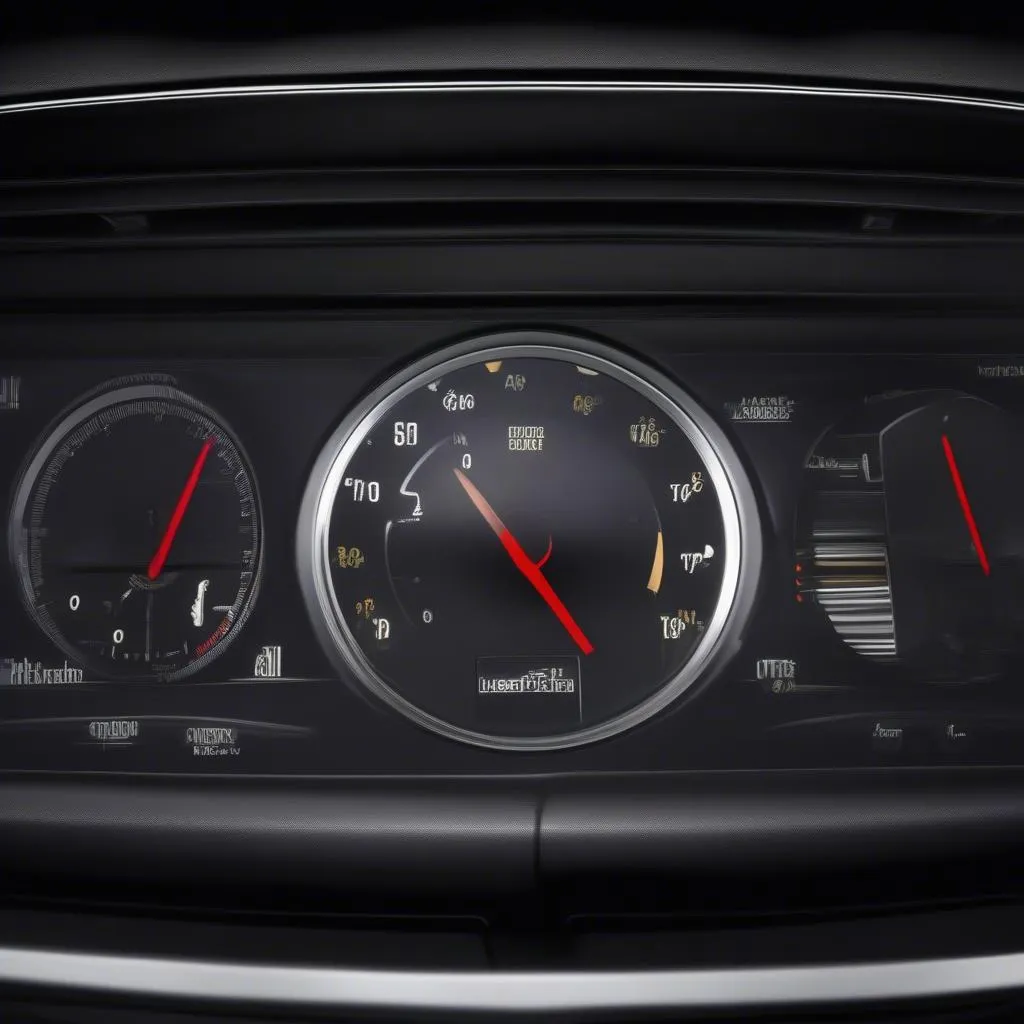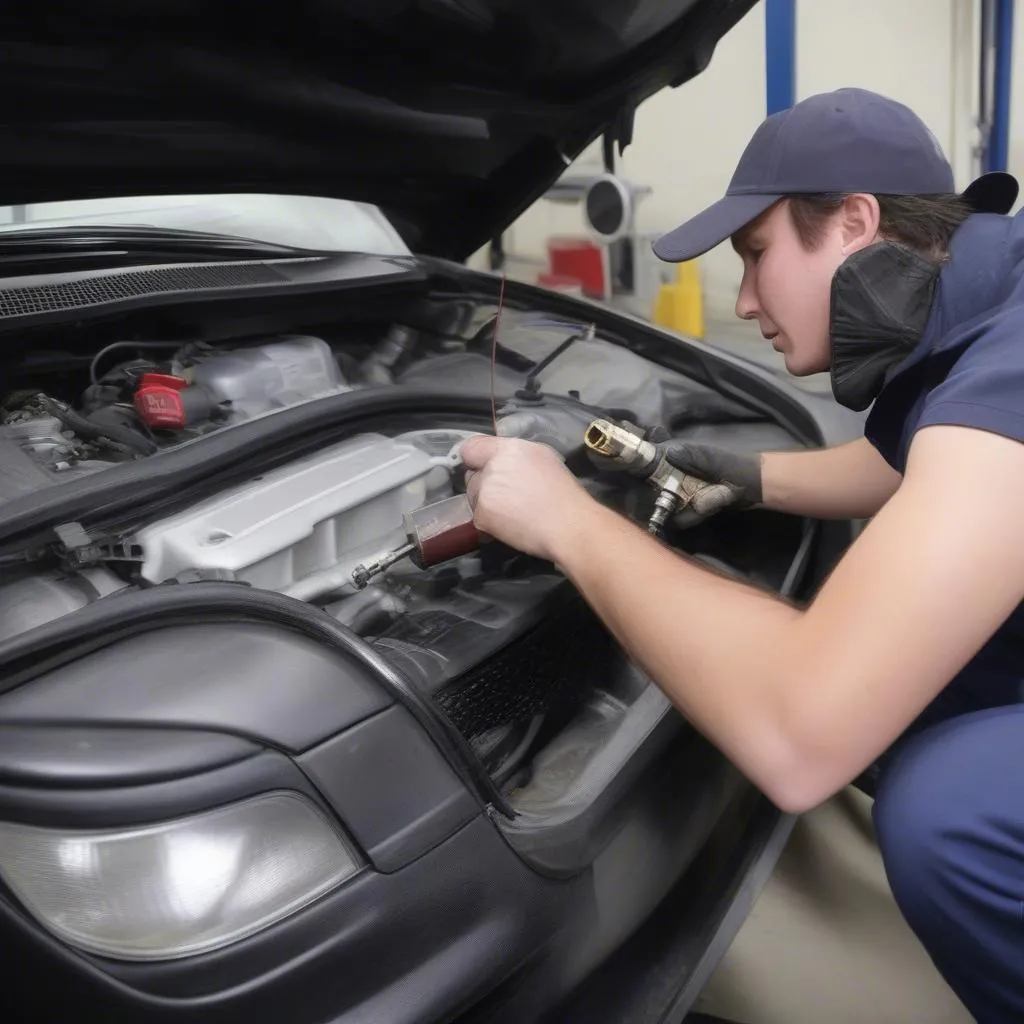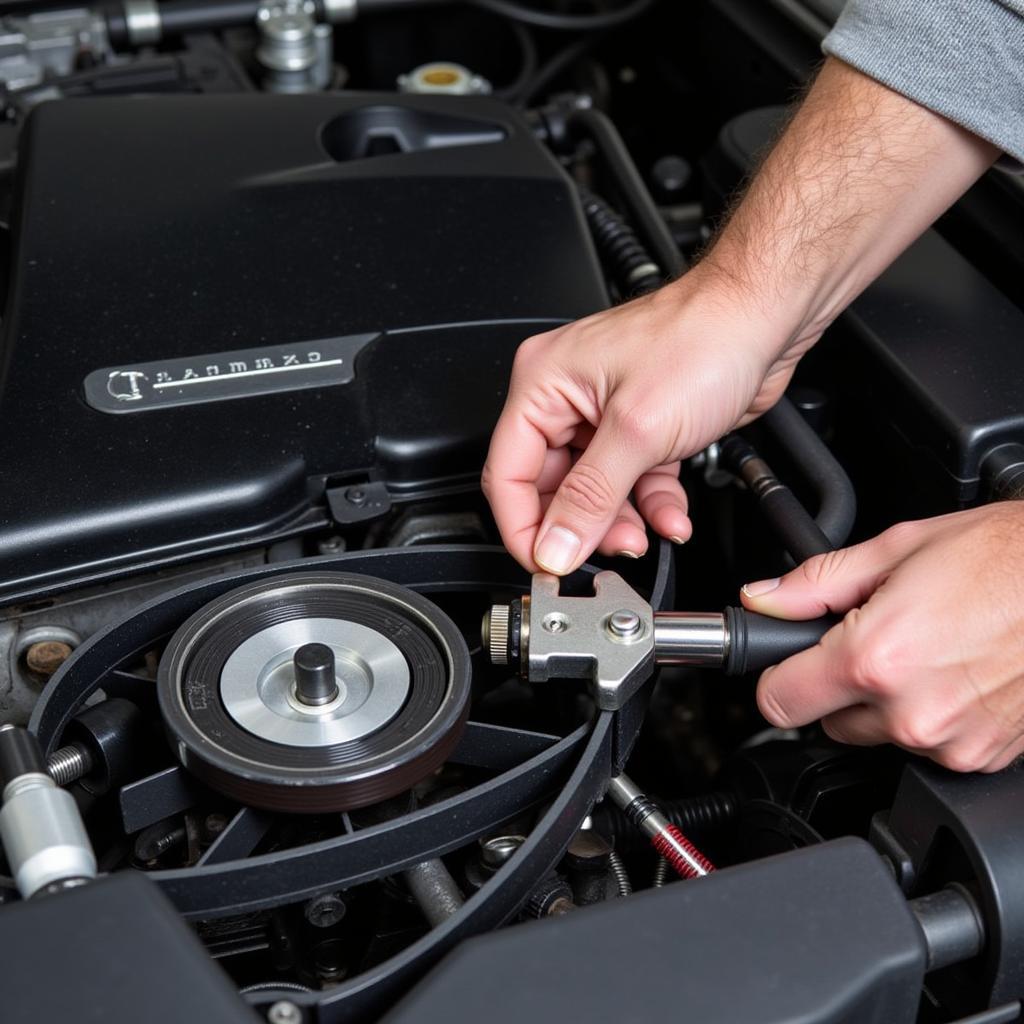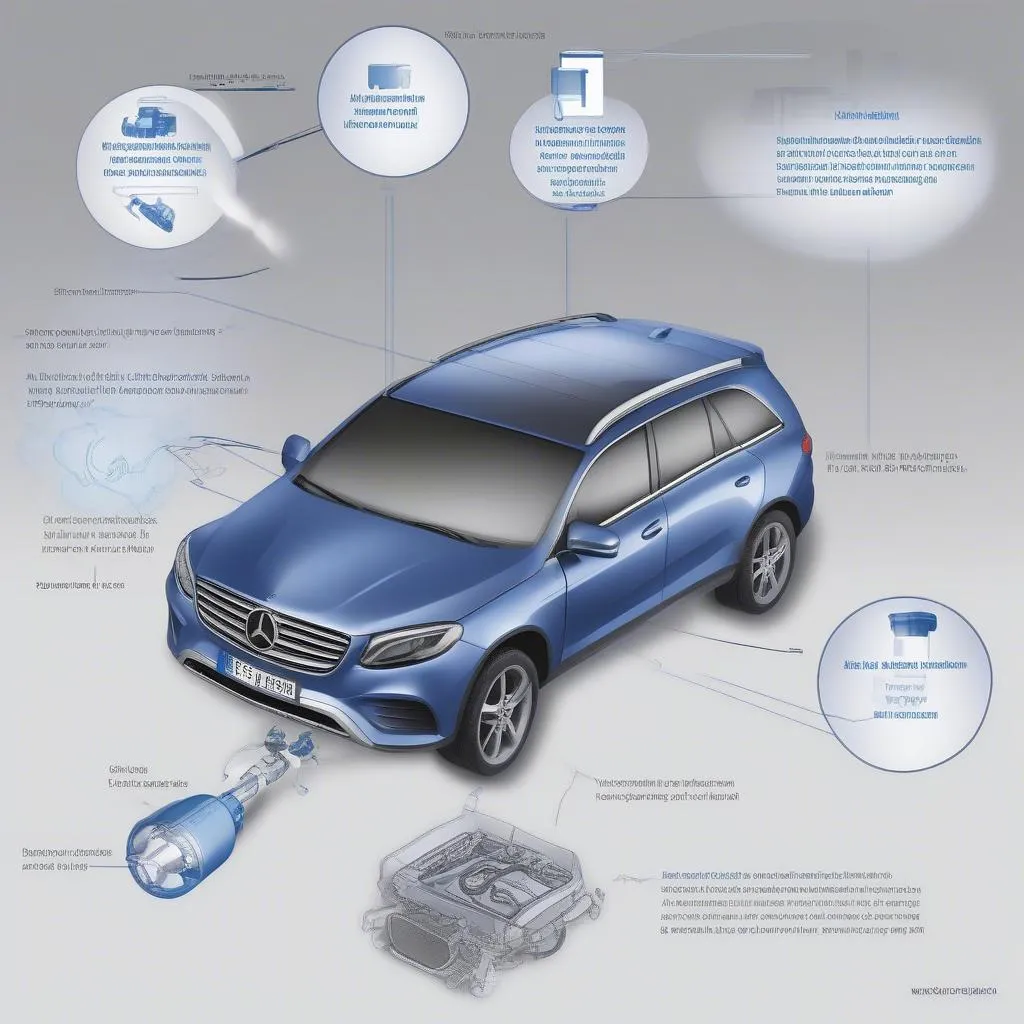Is your 1999 Mercedes ML320 gas gauge giving you inaccurate readings or stuck? You’re not alone. This is a common issue in this model year, often stemming from a faulty fuel level sensor or issues within the instrument cluster. This comprehensive guide will walk you through diagnosing and fixing the problem, getting your fuel gauge back to accuracy.
Understanding the Problem
Before we dive into the fixes, let’s understand why your ML320’s gas gauge might be malfunctioning. The most common culprit is the fuel level sensor located inside your fuel tank. This sensor measures the amount of fuel and sends a signal to the instrument cluster. Over time, this sensor can wear out, get clogged with debris, or fail altogether, causing inaccurate or erratic fuel gauge readings.
Another possibility is a malfunction within the instrument cluster itself. While less frequent, a faulty gauge or a wiring issue within the cluster can also disrupt the accurate display of your fuel level.
 Mercedes ML320 Fuel Gauge
Mercedes ML320 Fuel Gauge
Identifying the Culprit
1. Check for Physical Damage:
Start by visually inspecting the fuel level sensor connector located on top of the fuel tank. Look for any visible damage, loose connections, or corrosion on the wiring harness.
2. Test with a Scanner:
If no visible damage is found, the next step is to connect a professional-grade OBD-II scanner, like those offered by Cardiagtech, to your ML320’s diagnostic port. This will allow you to read fault codes related to the fuel system. Look for codes specifically related to the fuel level sensor or instrument cluster.
3. Instrument Cluster Check:
If the scanner doesn’t reveal any fault codes related to the fuel level sensor, the issue might reside in the instrument cluster itself. This would require further diagnosis by a qualified technician.
 OBD2 Scanner Mercedes ML320
OBD2 Scanner Mercedes ML320
Gathering Your Tools and Parts
Before you begin any repairs, gather the necessary tools and parts:
- Replacement Fuel Level Sensor (if required)
- OBD-II Scanner (for diagnosis and code clearing)
- Socket Wrench Set
- Screwdrivers
- Pliers
- Safety Glasses and Gloves
- Shop Towels
Fixing the Gas Gauge Reader
Replacing the Fuel Level Sensor
Important Note: Working with fuel system components can be dangerous. Take necessary precautions and if unsure about any step, consult a qualified mechanic.
-
Disconnect the Battery: Locate the negative terminal of your ML320’s battery and disconnect it. This prevents any electrical mishaps during the repair.
-
Access the Fuel Pump: Depending on your specific ML320 model, you might need to access the fuel pump from under the rear seat or by dropping the fuel tank. Consult your vehicle repair manual for specific instructions.
-
Disconnect the Fuel Lines: Carefully disconnect the fuel lines attached to the fuel pump assembly. Be prepared for some fuel spillage.
-
Remove the Fuel Pump Assembly: With the fuel lines disconnected, carefully remove the fuel pump assembly from the tank.
-
Detach the Old Sensor: The fuel level sensor is usually integrated into the fuel pump assembly. Carefully detach it, noting the orientation for installing the new one.
-
Install the New Sensor: Align and install the new fuel level sensor onto the fuel pump assembly.
-
Reassemble: Carefully reassemble all components in reverse order, ensuring all connections are secure and free from leaks.
-
Reconnect Battery and Test: Once the assembly is back in place, reconnect the battery negative terminal and turn on your ignition. Check your gas gauge for accurate readings.
 Mercedes ML320 Fuel Pump Assembly Replacement
Mercedes ML320 Fuel Pump Assembly Replacement
Addressing Instrument Cluster Issues
If you’ve ruled out the fuel level sensor and suspect an issue with the instrument cluster, it’s best to consult a qualified technician or specialized automotive electrician. Repairing instrument clusters often involves intricate electronics work best left to professionals.
Frequently Asked Questions
Q: Can a low battery cause my gas gauge to act erratically?
A: While a very low battery can sometimes cause temporary glitches in various vehicle systems, it’s unlikely to directly cause a faulty gas gauge.
Q: I replaced the fuel level sensor, but my gauge is still inaccurate. What could be wrong?
A: There are a few possibilities:
- Wiring Issues: Double-check all connections to the fuel level sensor for secure and corrosion-free connections.
- Faulty New Sensor: In rare cases, the new sensor itself might be faulty. Consider testing it or obtaining a replacement.
- Instrument Cluster Problem: If wiring and the sensor check out, a deeper issue within the instrument cluster might be the culprit.
Q: Are there any preventative measures to avoid gas gauge issues?
A: While not foolproof, some measures can help:
- Avoid Running Your Tank Too Low: Consistently running your fuel tank very low can cause premature wear on the fuel pump and sensor.
- Use High-Quality Fuel: Using quality fuel can help minimize sediment buildup in your tank, which can affect the sensor’s accuracy.
- Regular Vehicle Check-Ups: Having your vehicle inspected regularly by a qualified mechanic can help identify and address potential issues early on.
Q: What is the best OBD-II scanner for diagnosing Mercedes ML320 issues?
A: While there are many capable OBD-II scanners on the market, CARDIAGTECH offers a range of professional-grade tools specifically designed for Mercedes-Benz vehicles. These scanners provide in-depth diagnostic capabilities, allowing you to read and clear fault codes, monitor live data, and perform advanced functions.
Conclusion
A malfunctioning gas gauge can be a frustrating experience, but understanding the common causes and troubleshooting steps can help you resolve the issue effectively. Remember, safety is paramount when working with fuel systems. If you’re unsure about any step of the diagnostic or repair process, don’t hesitate to seek assistance from a qualified mechanic.


